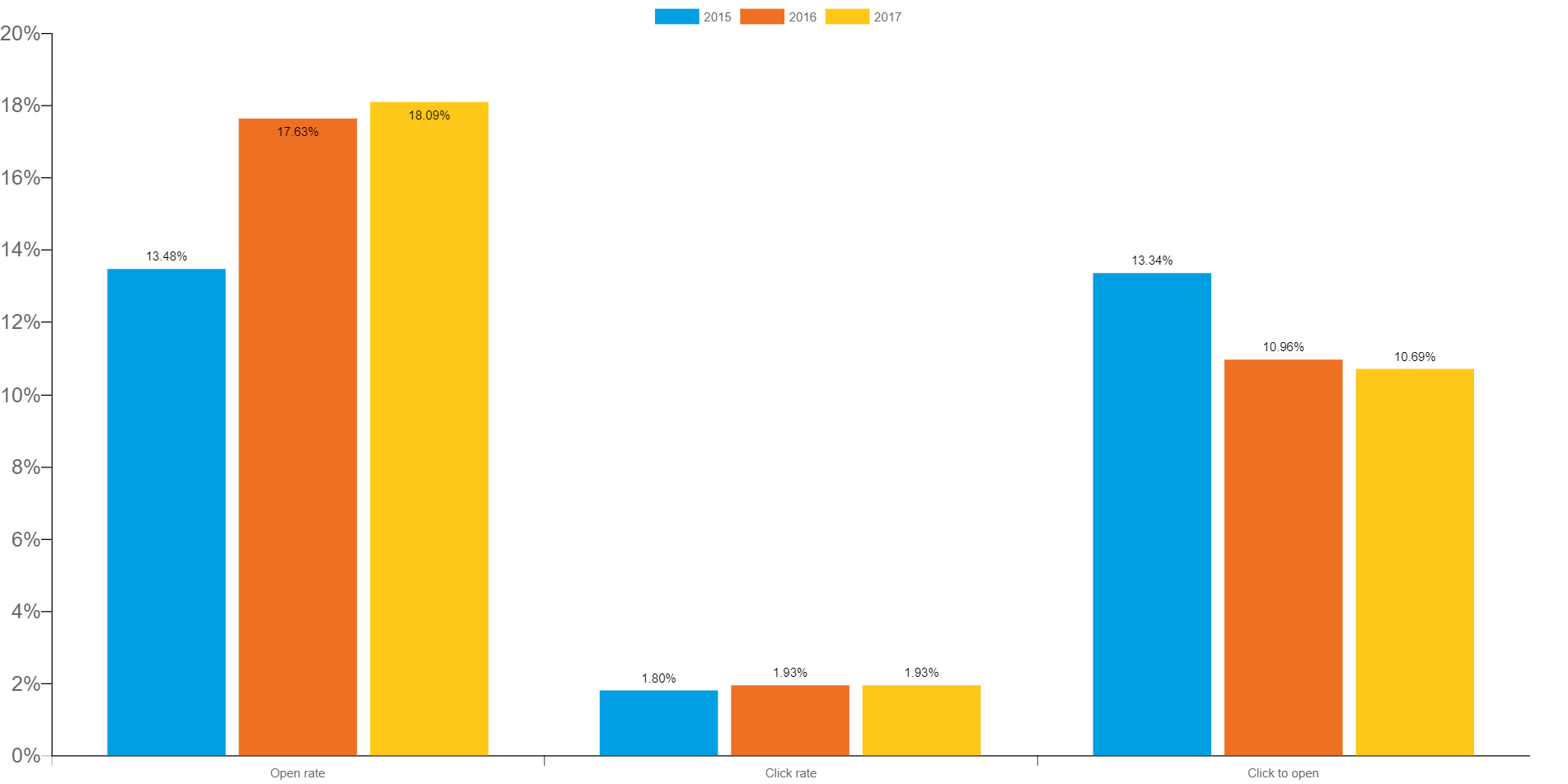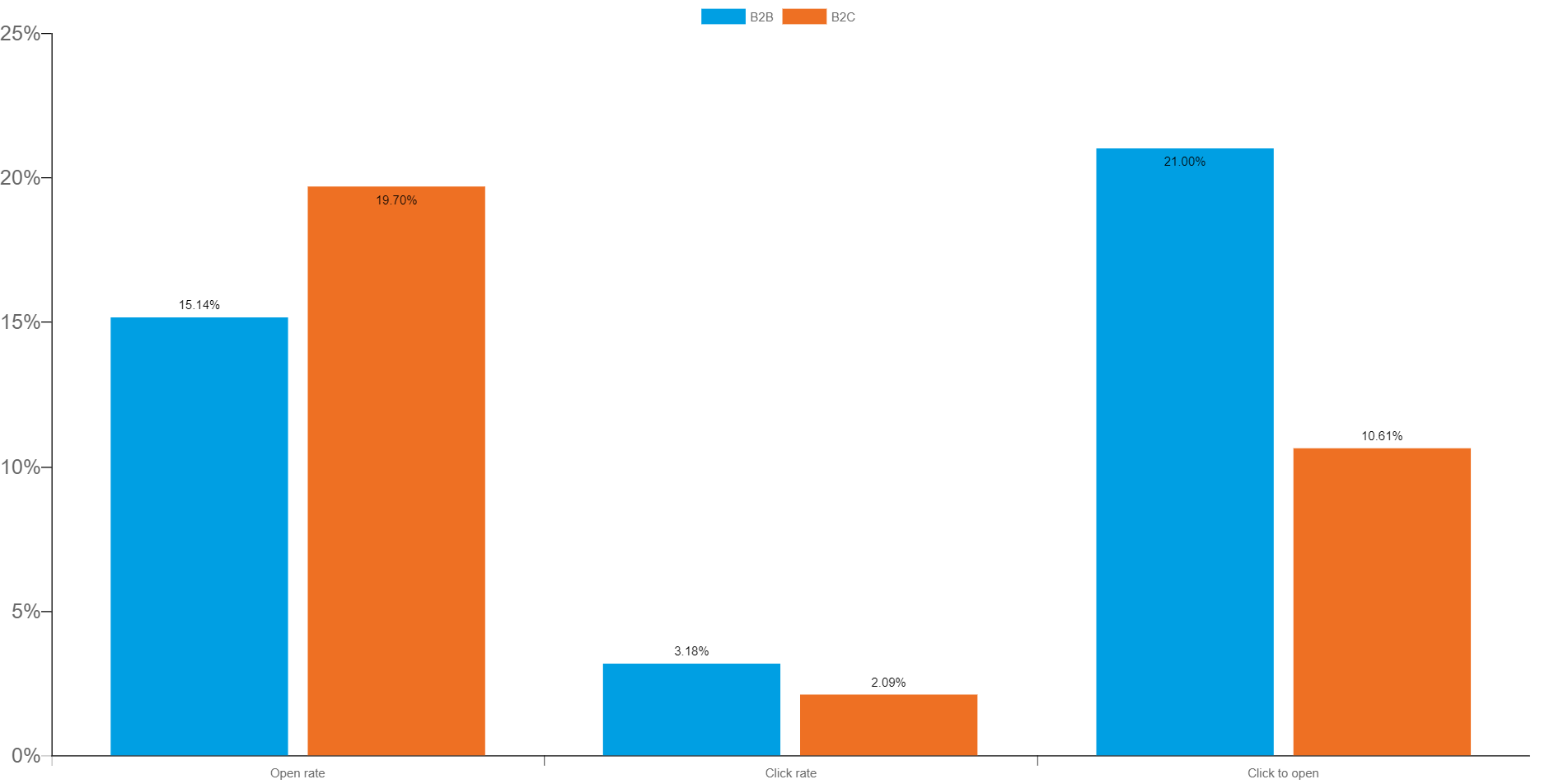Consumers opening more emails, and still clicking
04 Jul 2018
Email open rates increase and clicks remain constant according to the latest Email benchmarking report 2018
Emails are opened and read 18.1% of the time, continuing the positive trend seen last year, and consumers are still just as likely to click, with click-through rates remaining at 1.9% year-on-year. According to the DMA’s latest Email benchmarking report 2018, sponsored by dotmailer, delivery rates remained extremely high, despite a small decline year-on-year, while open rates continued to increase, with the highest percentage coming from finance (25.0%), not-for-profit (21.8%) and retail (19.3%) organisations.
The reported high rate of opens found in this report conflicts with the most recent edition of the Consumer email tracker 2017, which found that over half of consumers (57%) believe they open at least every other email they receive – a disparity of over three times. Tim Bond, Head of Insight at the DMA, said of the difference: “What consumers report and the figures we see from email service providers are understandably going to differ. Consumers remember opening the messages they receive and subsequently read, potentially forgetting or simply missing the ones they may triage on their phone without even thinking about it. What’s more encouraging is that the continued rise in open rates this year is still driving the same click-through rate as a year ago.”

Sector performance
According to the 2018 report, the top three most opened emails were from finance (25.0%), not-for-profit (21.8%) and retail (19.3%) organisations, while the least opened category was utilities (14.7%). However, when it comes to clicks there is a reversal of fortunes, with utilities leading the way (3.4%), followed by not-for-profit (2.7%) and travel (2.4%).

Skip Fidura, Strategy and Insight Director at dotmailer said: “These numbers reveal that clicks are still driven by relevance, but opens are driven by interest. The top three sectors for opens (finance, NFP and retail) are no surprise as consumers are naturally engaged with these types of companies, but the top three for clicks (utilities, NFP and travel) deliver more relevant content, which then generate more clicks. It will be interesting to see how these stats change in the coming year with the roll-out of GDPR. While list sizes may decrease, we should see each of these lists become more engaged in the short term. It is down to marketers to up their game and deliver more relevant content to keep this engagement up in the long term.”
B2B vs B2C
Comparing the performance metrics for B2B and B2C emails reveals an interesting difference in how recipients react to these emails. This years’ figures reveal that B2C emails are much more likely to be opened, with a 19.7% open rate compared to 15.1% for B2B. However, these business emails are more likely to be engaged with once opened, with a 3.2% click-through rate for B2B compared to 2.1% for consumer emails. This results in a click-to-open rate for business emails that is almost double that for consumer emails.

Bond continues: “It’s always interesting to see how email is performing and being utilised across different sectors, as well as between B2B and B2C contexts. The fact that utility companies and B2B organisations are leading the way in click-to-open rates, while consumer organisations like charities, retailers and even banks are securing the greater proportion of opens. This highlights both the functional use of email and the relevance of the medium as a broadcast channel, offering direct drivers to bills or work-related opportunities in the former and the power of its nudge effect in reminding consumers to visit their favourite brands.”
To find out more about this research, visit: https://dma.org.uk/article/email-benchmarking-report-2018